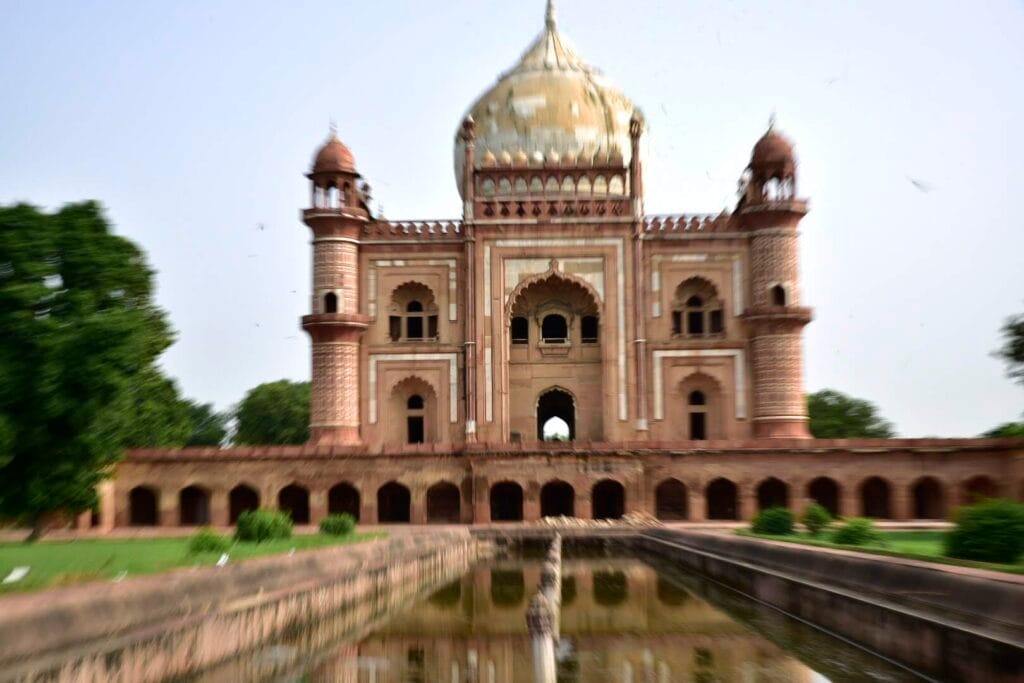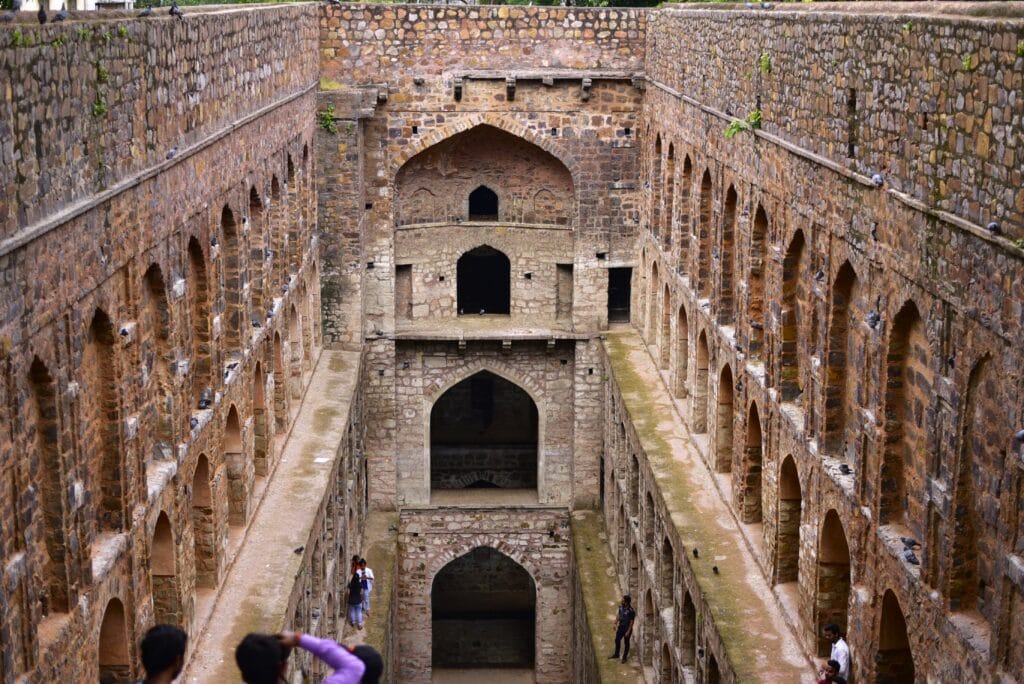Nestled in the heart of Delhi lies a gem that inspired the Taj Mahal. Join me on a mesmerizing journey through Humayun’s Tomb!
An Impromptu Adventure: Wandering Through Delhi’s Historic Lanes
Oh boy, let me tell you! Even after exploring the depths of Ugrasen ki Baoli, our hearts yearned for more of Delhi’s treasures. The afternoon sun was blazing hot, but our josh was even hotter. We thought, “Why not check out another of Delhi’s spectacular jewels – Humayun’s Tomb?”

The Journey Begins: Navigating Delhi’s Infamous Traffic
After a bit of haggling with the cab driver (as is tradition!), we set off towards Humayun’s Tomb. The ride was a classic Delhi experience – honking horns, colorful streets, and that inexplicable city energy. Despite the scorching loo (hot wind) hitting our faces, our excitement was through the roof!

First Impressions: A Sight for Sore Eyes
As soon as we entered, we faced a tiny hiccup. My heavy-duty camera was labeled “commercial equipment.” Arrey yaar, what to do? But trust me, the view that greeted us made us forget all about it in a jiffy!

Right in front of us stood a massive pillar, intricately carved with directions to the tomb and nearby monuments. It was like a historical Google Maps, I tell you! The path leading to the main attraction was spick and span, building our anticipation with every step.

And then, bam! There it was – Humayun’s Tomb in all its glory! The view from the gate was absolutely breathtaking.

A narrow canal stretched from the tomb to the entrance, creating a perfect symmetry that would make even the most particular maths teacher proud.

A Red Sandstone Marvel
I couldn’t help but go click-happy with my camera. This red sandstone beauty bore such a striking resemblance to the Taj Mahal, it was no wonder people call it the inspiration behind Shah Jahan’s masterpiece.

There was a serene pool and a fountain too, though the fountain wasn’t working now. Imagine how spectacular it would look with water gushing out! But for my life’s historical information, I have seen the working fountain in year 2014 already.

Inside the Mausoleum: A Slice of Mughal Grandeur
Stepping inside the monument felt like entering a time machine. Emperor Humayun’s final resting place, made of gleaming white marble, stood in stark contrast to the red sandstone surroundings. It was a visual treat that left us gobsmacked!

For a photography enthusiast like me, this place was nothing short of paradise. The intricate jalis (stone screens) created a mesmerizing play of light and shadow.

The architecture was so cleverly designed that natural light filtered in, giving the interiors a soft, dreamlike glow. It was like Instagram filters, but make it 16th century!

A Much-Needed Breather
The afternoon heat finally caught up with us, and we took a breather on one of the platforms. As we sat there, sipping water and wiping sweat, I couldn’t help but marvel at the incredible craftsmanship around us.

It was a moment to soak in the rich history and imagine the skilled artisans who created this wonder centuries ago.

Exploring Further: Hidden Gems Galore
But wait, there’s more! The complex houses several other architectural marvels that deserve a shout-out:
1. Isa Khan’s Tomb: An octagonal stunner with a multicolored dome. The blue tilework was so vibrant, it could give the sky a run for its money!

2. Bu Halima’s Tomb: Another beautiful addition that added its own charm to the area.

3. Barber’s Tomb: Smaller, but equally intriguing. (Who knew even barbers got such grand tombs back then?)

4. Afsarwala Tomb: Its pristine white facade stood out like a sore thumb (but in a good way) among the red structures.

Each of these monuments had its own story to tell, adding layers to the rich tapestry of history surrounding Humayun’s Tomb.
A Trip Down Memory Lane
As we explored, I was suddenly hit by a wave of nostalgia. This wasn’t my first rodeo at Humayun’s Tomb – I had been here before on July 20, 2014, with my college gang.






Those carefree days came rushing back, reminding me of a time when our biggest worry was clearing exams, not clearing credit card bills!
The Perfect Ending: History Meets Culinary Delight
Our day of exploration ended on a mouthwatering note as we made our way to Paharganj for some lip-smacking Chawla’s Chur Chur Naan. As we devoured what I swear is the best naan this side of the Yamuna (or maybe even the world!), we couldn’t stop gushing about our incredible journey through time and architecture.

Humayun’s Tomb isn’t just another monument; it’s a living, breathing piece of India’s rich cultural heritage. Whether you’re a history buff, an architecture enthusiast, or just someone looking to spruce up your Instagram feed, this UNESCO World Heritage Site should be on your Delhi must-visit list.

So, grab your camera (just remember the “commercial equipment” rule!), pack some water and a hat, and get ready to be transported back to the golden age of the Mughal Empire. Trust me, it’s an experience that’ll stay with you long after the Delhi dust settles on your shoes!
How to Reach Humayun’s Tomb
- By Metro: Hop off at JLN Stadium station on the Violet Line. From there, an auto-rickshaw ride will get you to the tomb in no time.
- By Bus: Several DTC buses ply routes passing through Nizamuddin. Just keep your eyes peeled for the tomb!
- By Car/Taxi: Easy peasy to reach by car or taxi from anywhere in Delhi. Ola and Uber are your best friends here.

Best Time to Visit
- October to March: The winter months are perfect for exploring without turning into a human puddle.
- Early Morning or Late Afternoon: To avoid the harsh midday sun and capture those Insta-worthy golden hour shots.
- Avoid Peak Summer (April-June): Unless you fancy a free sauna experience!

A Bit of History for the Curious Minds
- Built in 1570 AD, Humayun’s Tomb was commissioned by Humayun’s first wife, Bega Begum. Talk about relationship goals!
- It’s the first garden-tomb on the Indian subcontinent and set the template for the Taj Mahal.
- The tomb complex is like a mini-city of Mughal royalty, housing the graves of several emperors and nobility.

Bragging Rights (aka Achievements and Recognition)
- UNESCO World Heritage Site since 1993. It’s kind of a big deal!
- Underwent a major glow-up (restoration project) completed in 2013, which bagged the UNESCO Asia-Pacific Award for Cultural Heritage Conservation.
- It’s not just a pretty face – it’s an important example of Mughal architecture that has inspired countless buildings across India and beyond.




